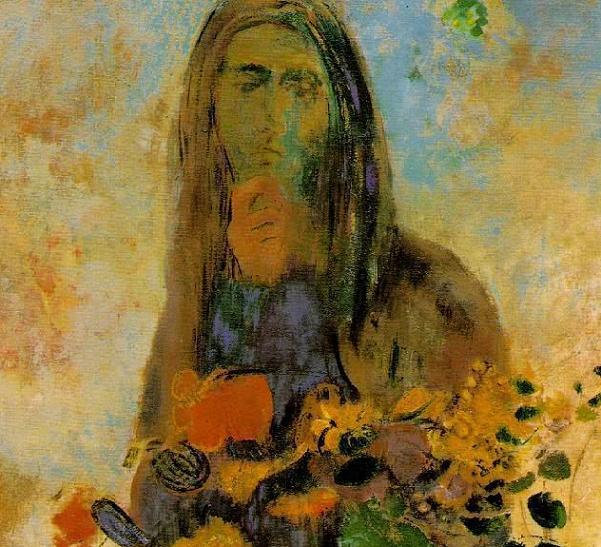
LIFE AS MYTH
![]()
JOURNAL
![]()
JOURNAL 2012
The seeds of wisdom
Leaning into the answer
![]()
WINTER 2012
Mapping the mystery
Dreams, symbolism & the unconscious
The Arnolfini Wedding Portrait
![]()
LIFEWORKS
![]()
ATLAS
![]()

WINTER 2012
DREAMS, SYMBOLISM AND THE UNCONSCIOUS
Mystery. Odilon Redon. nd. Phillipps Collection, Washington, DC.
The work of both Sigmund Freud (1856-1939) and Carl G. Jung (1875-1961) was particularly influential to the development of Symbolism. During this period, they provided ground-breaking insights into the interpretation of imaginative, symbolic and dream material. Freud believed that repressed aggression and sexuality are at the root of human behavior. In his therapeutic practice, he explored dream material for insights into these unconscious drives and their effect on human behavior. He noted that some patients repeatedly relived past traumas in their dreams. According to Freud, over the course of repetitive dreaming, the dreamer often added details about the nature of the original injury. The function of this process was to help the patient obtain mastery over the traumatic event.
Jung, a protege of Freud, disputed his mentor's premise of aggression and sexuality as the sole motivating forces behind human behavior. His areas of research broadened to include not only dream material, but art, mythology, religion and philosophy. His major contributions to the field of psychoanalysis are the Jungian archetypes and the concepts of synchronicity and the collective unconscious.

